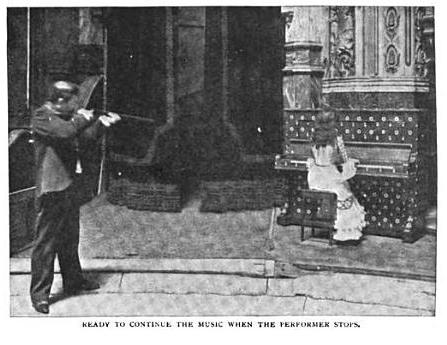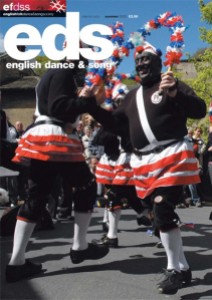The Fondazione Giorgio Cini, a non-profit cultural institution based in Venice, launched the series Atti online in 2009 with Antonio Vivaldi: Passato e futuro, a collection of papers presented at the eponymous conference that the foundation sponsored in 2007. As the series title implies, the full collection is online; there is no charge for access.
Der travestirte Hamlet
Der travestirte Hamlet: Eine Burleske in deutschen Knittelversen mit Arien und Chören (1794) was one of several parodies that capitalized on the Hamlet fever that swept the German-speaking lands in the late eighteenth and early nineteenth centuries.
Karl Ludwig Giesecke wrote the play; the composer was not indicated, but there are grounds for believing that it was Vincenc Tuček (1773–1821).
The numbers include a song in which Polonius coaches Ophelia on how to seduce Hamlet, a song in which Hamlet insists that he is not afraid of ghosts, and a duet for Hamlet and Ophelia at the end of the “get thee to a nunnery” scene. No one is killed in the play: Polonius avoids Hamlet’s rapier, Ophelia recovers her sanity, the poisoning is averted, and ultimately everyone goes out to drink wine together. The show ends with a choral finale and a contradance.
This according to “Some Viennese Hamlet parodies and a hitherto unknown musical score for one of them” by Peter Branscombe in Festschrift Otto Erich Deutsch zum 80. Geburtstag (Kassel : Bärenreiter, 1963), which is covered in RILM’s Liber Amicorum: Festschriften for music scholars and nonmusicians, 1840–1966.
Above, Edwin Booth as the Melancholy Dane, ca. 1870.
Related article: Comedy versus opera
Comments Off on Der travestirte Hamlet
Filed under Classic era, Curiosities, Dramatic arts, Humor, Literature
Musical marksmanship
“Playing the piano with a rifle” in The Strand magazine 28 (December 1904, pp. 580–8) describes a performance by Colonel Gaston Bordeverry, who learned the intermezzo from Mascagni’s Cavalleria rusticana by ear and, having devised a system of bull’s-eyes to indicate the correct notes on a specially-built piano, performed the tune by firing 66 shots at the instrument with a rifle. The specially-made bullets were powderless and noiseless when they struck, which they did with enough force to pierce through a one–inch-thick plank.
 Colonel Bordeverry and his daughter were variety show performers in the early twentieth century; his performance of the intermezzo was one of their most successful numbers. The article was reprinted as “Not the usual performance practice” in the American Musical Instrument Society newsletter 32/1 (Spring 2003, pp. 12–13, 16).
Colonel Bordeverry and his daughter were variety show performers in the early twentieth century; his performance of the intermezzo was one of their most successful numbers. The article was reprinted as “Not the usual performance practice” in the American Musical Instrument Society newsletter 32/1 (Spring 2003, pp. 12–13, 16).
Comments Off on Musical marksmanship
Filed under Curiosities, Dramatic arts, Performance practice
English dance & song
Published by the English Folk Dance and Song Society, English dance & song has appeared at least four times a year since it was launched in 1936. The magazine presents festival listings and other news, interviews with current English traditional and neotraditional performers, and reviews of current publications, as well as brief research-based articles that explore historical documents and current practices.
The Society, which was formed in 1932 by the merger of the Folk-Song Society (founded in 1898) and the English Folk Dance Society (founded in 1911), also publishes a scholarly periodical, Folk music journal.
Related articles:
Comments Off on English dance & song
Filed under Dance, Europe, Music magazines, World music
Association for Cultural Equity
Founded by Alan Lomax in 1983, The Association for Cultural Equity‘s mission—“to facilitate cultural equity, the right of every culture to express and develop its distinctive heritage”—is realized through several projects that use and expand upon Lomax’s research, including the digitization and dissemination of his field collections.
As a part of this service, ACE supports a free online research center that includes an archive of Lomax’s collections; the sound recordings are indexed by place in ACE’s Lomax Geo-Archive, which provides excerpts from the recordings along with the full details of each recording session. Through cooperation with ACE, the American Folklife Center houses Lomax’s physical collection.
Comments Off on Association for Cultural Equity
Filed under Ethnomusicology, Resources, World music
Conceptual art meets musicology

Vitaly Komar and Aleksandr Melamid‘s The people’s choice music: The most wanted song/The most unwanted song (Dia Center for the Arts, 1997) presents the results of a research project that used a questionnaire to determine the most desired and most undesired characteristics of popular songs. Two new songs—both composed by Dave Soldier, with lyrics by Nina Mankin—exemplify the poles of the questionnaire results.
The most wanted song is five minutes long and comprises a medium-sized group (guitar, piano, saxophone, bass, drums, violin, violoncello, synthesizer, and low male and female voices) performing in a rock/R&B style. It narrates a love story and has a moderate tempo, volume, and pitch range. It will be enjoyed by approximately 72% of listeners.
The most unwanted song is 22 minutes long and features accordion and bagpipe (tied at 13% as the most unwanted instruments) along with banjo, flute, tuba, harp, organ, and synthesizer (the only instrument to appear in both ensembles). It involves an operatic soprano rapping and singing atonal music; advertising jingles, political slogans, and elevator music; a children’s choir singing jingles and holiday songs; and dramatic juxtapositions of loud and quiet sections, fast and slow tempos, and very high and very low pitches. Fewer than 200 individuals in the entire world will enjoy it.
Comments Off on Conceptual art meets musicology
Filed under Curiosities, Humor, Popular music
Konsonans
In 2009 the Nižegorodskaâ Gosudarstvennaâ Konservatoriâ imeni M.I. Glinki launched its new quarterly journal, Konsonans. The first issue presents a chronicle of events in the life of the conservatory during the first semester of the academic year 2008–09, and discusses the activities of individual departments and personalities. The authors of contributions include both faculty members and students. The editor-in-chief of Konsonans is Tat’âna Sidneva, the head of the Kafedra Filosofii i Èstetiki and the prorector for scholarly affairs at the conservatory.
Comments Off on Konsonans
Filed under New periodicals, Pedagogy
Carlo Minasi
Carlo Minasi (1817–91) was a London-based pianist and concertina player who also taught both instruments, a prolific composer and arranger for the concertina and other instruments, the author of 21 instrumental tutors (13 for the concertina), and a talented inventor. He produced 42 albums of songs and tunes—22 for the English concertina, 10 for the German concertina, and 10 for general use—and he obtained patents on concertinas of his own design and on several specific improvements. He also patented improvements in firearm and furniture design, as well as one for a poultry incubator.
Despite his accomplishments, Minasi is not profiled in any of the standard music encyclopedias; as far as we know, the only comprehensive source for information about him is Randall C. Merris’s Carlo Minasi: Composer, arranger, and teacher, concertina and piano in Papers of the International Concertina Association volume 6 (2009), pp. 17–45.
Filed under Curiosities, Instruments, Romantic era














